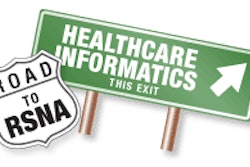Thursday, November 29 | 11:40 a.m.-11:50 a.m. | SSQ10-08 | Room S403A
A new "LUNG-RADS" system for lung cancer screening with CT aims to standardize the reporting of findings, both pulmonary and extrapulmonary, according to researchers from the Lahey Institute in Burlington, MA, who developed the system late last year.The program design places emphasis on a standardized classification system for reporting low-dose CT lung screening findings, addressing several goals common to all comprehensive low-dose CT lung screening programs, said Dr. Brady McKee. Those goals include facilitating adherence to radiology recommendations for screening, structured training, communicating exam results, quality control, tracking findings, generating follow-up letters, and coding, he said.
The LUNG-RADS system assigns a single alphanumeric diagnosis label for each low-dose lung cancer screening exam. In the system, the letters P (positive) and N (negative) are used for potentially significant extrapulmonary findings. Numbers are used for lung-cancer-specific findings: 1 means negative; 2 is benign, such as a stable pulmonary nodule; 3 is positive, likely benign, but requiring short-term follow-up such as a stable solid nodule; 4 means a finding suspicious for cancer; and 5 is positive representing a known malignancy, according to the group.
Since the Lahey Institute started its screening program in January 2012, it has screened more than 500 patients, and LUNG-RADS has been used in every report, McKee said.



















